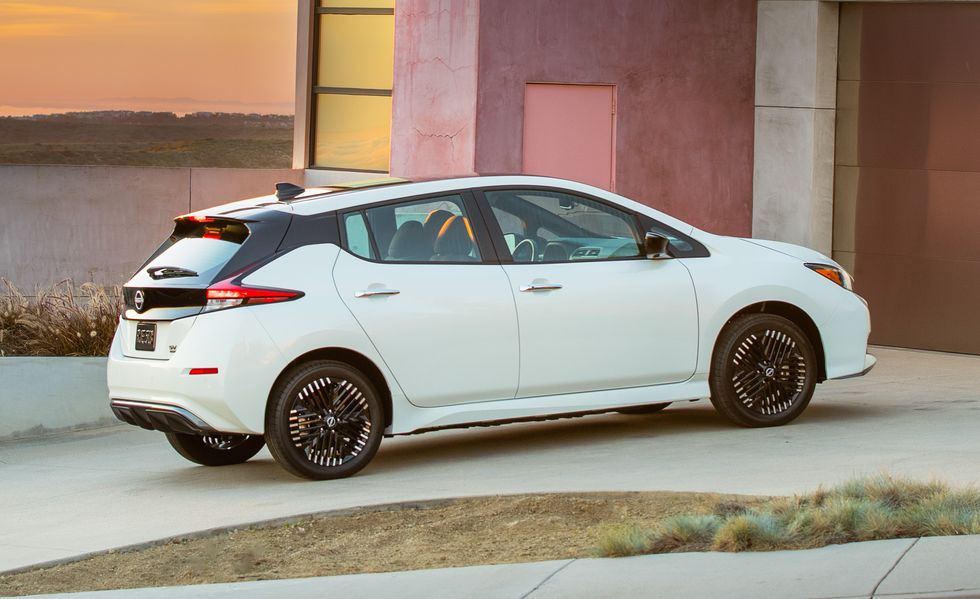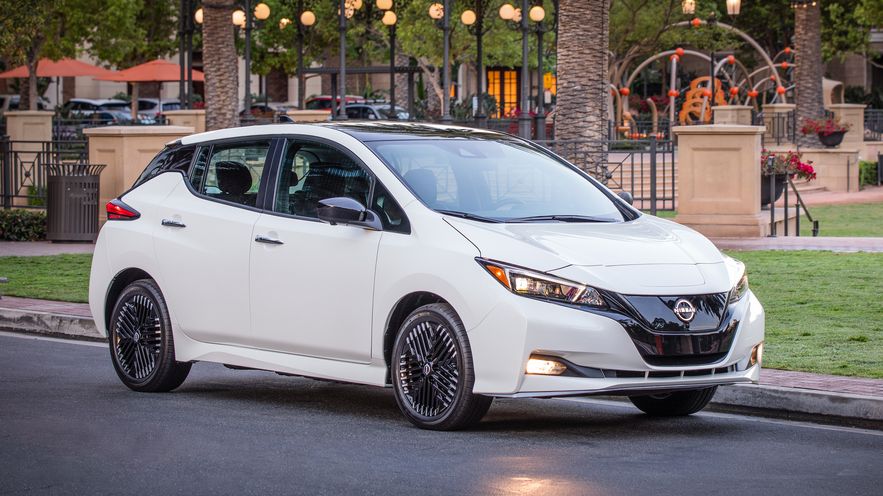Overview
Proof that an electric vehicle can be affordable, the Nissan Leaf is gasoline-free for under $30,000. That makes the transition from fuel pump to charging station easier to justify, but despite the Leaf’s inexpensiveness, its drawbacks include a slower 50 kW DC fast-charging maximum capacity and a short 180 miles of range on a single charge according to our 75-mph highway test. A shorter range with slower charging is a recipe for frustration, but if your travel needs are close and local, the Leaf hatchback makes sense. For more driving range for roughly the same price, we’d suggest reading about the Hyundai Kona Electric and Chevrolet Bolt and Bolt EUV. Nissan announced its plans to discontinue the Leaf, moving its focus and efforts to its more expensive and larger EV, the new Ariya.
EV Motor, Power, and Performance
Leafs are front-wheel drive cars. The standard Leaf S comes with a 147-horsepower electric motor and a 40.0-kWh battery pack—both dinky by today’s standards. Leaf SV Plus gets a gutsier, 214-hp electric motor and a larger 62.0-kWh battery. An S managed a 7.4-second zero-to-60-mph time at our test track, but it feels perkier than this number suggests thanks to the instantaneous power delivery of the electric motor. This result makes it slower than the Bolt EV and the Model 3, though. Upgrading to the more powerful Plus model will no doubt result in quicker acceleration, but we won’t be able to confirm that until we are able to test one. The Leaf’s e-Pedal feature allows the driver to toggle back and forth between regenerative braking modes, one of which allows the car to coast when the driver lifts off the throttle and another that slows the car when you take your foot off the gas and uses that energy to recharge the battery.

